Stories from the Heart
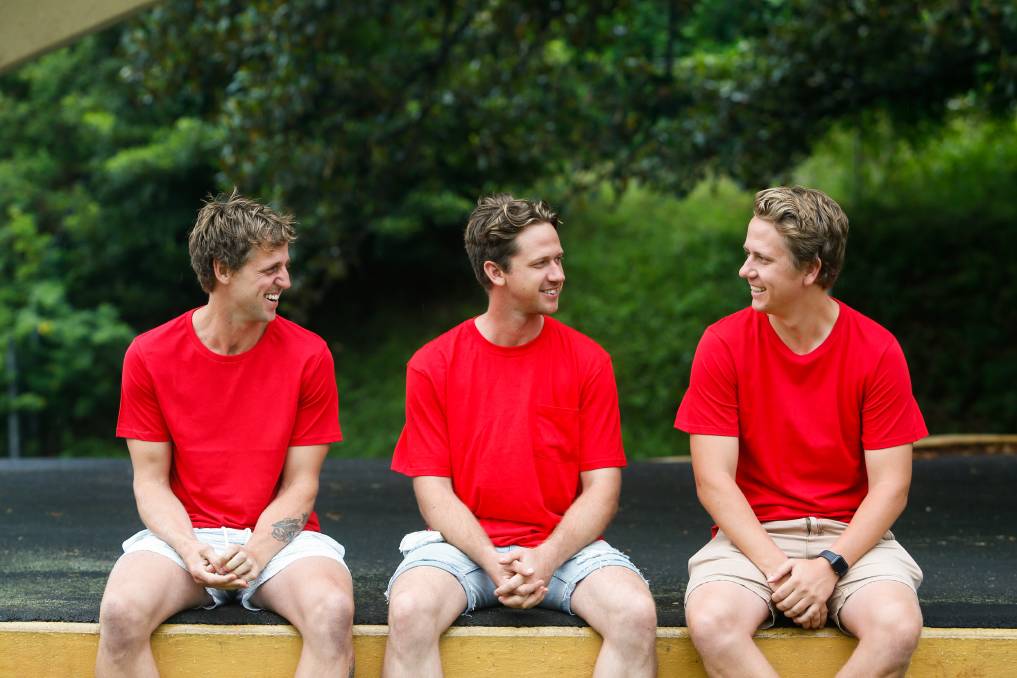
Michael Williams
In 2019 Michael’s dad, Darren Williams, tragically suffered a fatal heart attack while watching his boys play a game of AFL at his beloved club, Kiama Power. He was only 55.
Michael and his two brothers were playing their first football game of the season at their local club, Kiama Power. Darren was cheering them on at the sidelines when he had a heart attack and collapsed on the field. Unfortunately he couldn’t be revived. The family found out that Darren had a few warning signs that he brushed off thinking they were nothing. Michael is a passionate advocate for taking care of your heart encourages everyone not to ignore any warning signs as well as the importance of regular heart health checks. “It’s those little warning signs, which most blokes would think ‘they’re nothing’ – but it can cost you in the end so I just want to get people talking about it.”
Darren was a devoted father, loving husband to his high school sweetheart, Kim, and an involved and much-loved member of the local south coast community. The Williams family has turned their tragedy into an incredible legacy and have raised an amazing amount of money for heart research, and invaluable awareness around heart health and checks.
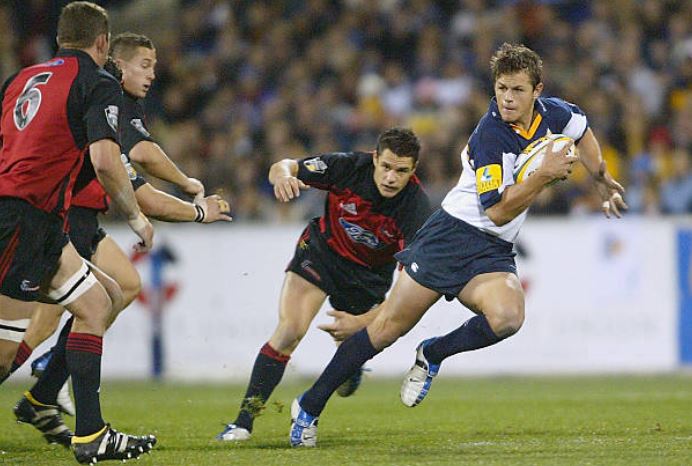
Joel Wilson
Joel Wilson counts himself as a very lucky man. But he adds to this list – he believes he is lucky to have had a heart attack. You may think this is very strange. Surely a life-threatening heart attack happening to a healthy 45–year–old, who’s always been very physically active, rarely drinks and eats extremely well could be at best described as unlucky?
For Joel, he says “I feel lucky because I’m still here and lucky that I now know what’s going on in my body and so I can do something about it. I see it as a positive thing that will extend my life.
In fact, the only bit I find frightening about my whole ordeal is that my denial nearly cost me my life. My lovely wife Becs and my beautiful kids could have lost their dad.”
Joel Wilson is a highly successful professional sportsman. In his 15-year professional career he’d played over 50 games of rugby union for the Brumbies, as well as rugby league for the North Sydney Bears and Northern Eagles. After his professional career ended, he took up rugby coaching and is currently a College Sports master – you wouldn’t think a heart attack could happen to a person like him.
Well, that’s what Joel thought. In the days leading up to his heart attack things just weren’t making sense. He just didn’t feel well. Maybe it was heart burn? But he’d never had that before. COVID? Chest infection? Mid-winter blues? Or perhaps he was just getting older and losing fitness?
“I tried to explain it all away – because you know – heart attacks just didn’t happen to people like me. In hindsight I feel a bit stupid as I was in complete in denial. In fact, despite being transferred to hospital in an ambulance with sirens blaring, it really wasn’t until the medical staff looking after me called “Code Blue!”, that reality set in! Then lights were flashing, people were running from all directions, with concern written on their faces – that’s when I knew. I was in serious trouble, and I really needed to speak to my wife” says Joel.
Like most people in Joel Wilson’s situation – he had been ignoring the signs. For the 3 days before his heart attack, his body had been sending signals that things were far from ok.
In hindsight Joel says “I can’t believe I ignored the signals, which now in retrospect seem so obvious! I did that “bloke and sportsman thing” and pushed on through the heartburn, shortness of breath while exercising, chest pain and even tunnel vision. Yet still I was in denial. And my denial could have cost me and my family dearly”.
Joel ended up having triple bypass surgery to save his life.
On the flip side Joel says he feels “so lucky and so grateful. Naturally, like all families in our situation we are left with questions. First and foremost is “why did this happen to me?”. But also, “how do I protect my children and stop the same thing happening to them?”
Joel says “Knowledge is power. Disease is manageable if you know about it. It’s not knowing that is scary and dangerous. Because not knowing can rob you of your life and your loved ones of their precious time with you. I have no doubt knowing about what is happening in my body has prolonged my life and enabled me to be aware, so I can deal with it going forward into the future.
I am also so grateful for the level of medical expertise and care I experienced – it was fantastic. It so important for all of us – as there are nearly 60,000 of us who have a heart attack every year in Australia – that we continue to support life-saving research so in the future everyone can be as lucky as I am!”
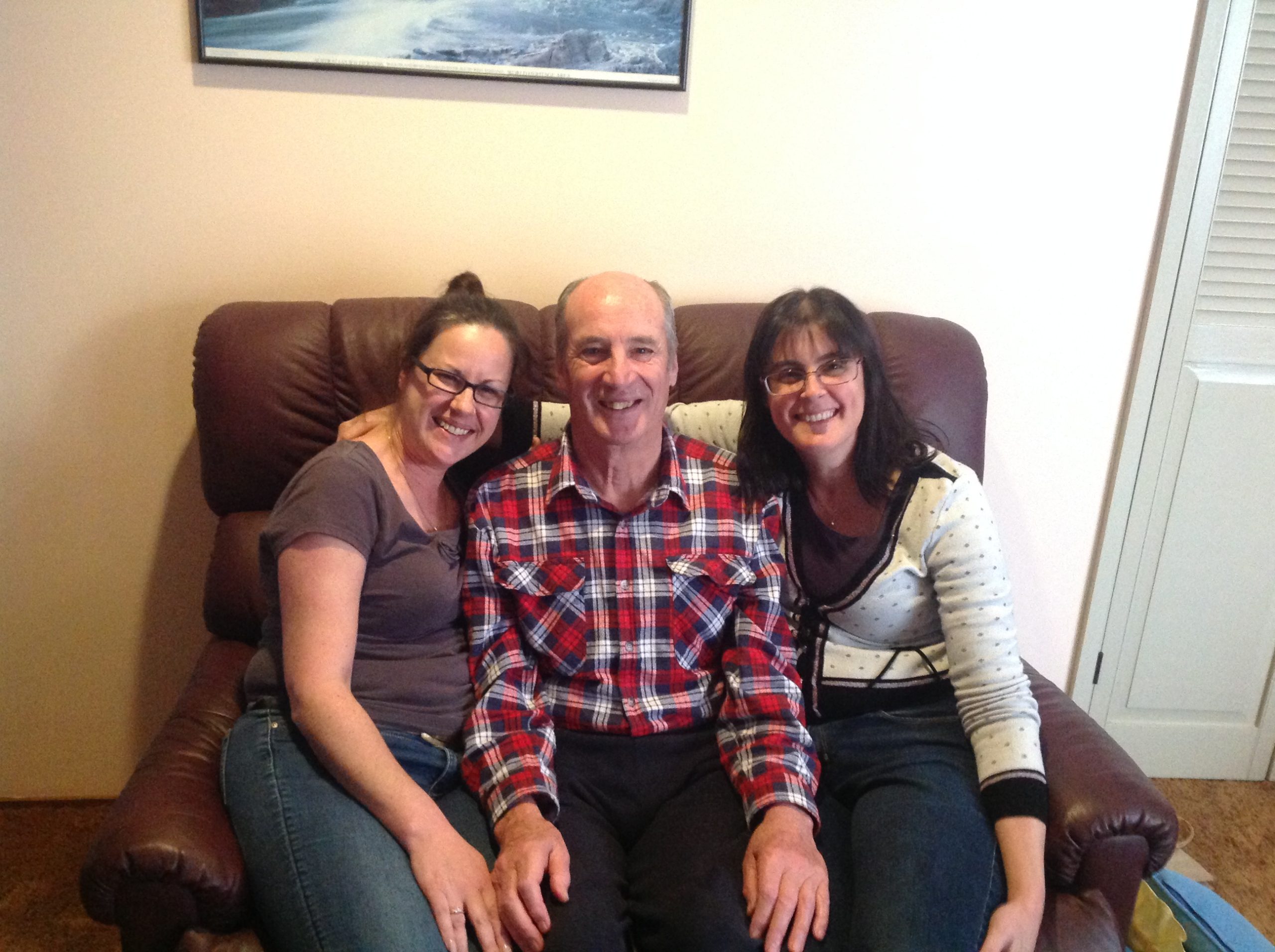
Ross Graham
Thirty years ago, at only 48, Ross was on the verge of a heart attack. Ross was fortunate as he heeded the warning signs and got to hospital in time. Yet this healthy and active marine engineer and father to 4, still found himself lying in hospital, waiting on an angioplasty procedure to save his life. It was as he lay there watching camera footage of the blockage in his heart, that he recalls “I was blown away. It struck me with such a force, that I was still here and having this incredible procedure to save my life, because of people I didn’t know, who donated money to research to make this happen, and I so wanted to be a part of it and pay it forward for others.”
These days can you imagine getting a blood pressure reading of 240/140 and getting told to “just go and see your doctor in the next few days”. 30 years ago, this is what happened to Ross Graham. He was at work when he just didn’t feel well, so he went to see the company nurse to have his blood pressure taken and the reading was 240/140.
Fortunately for Ross, as he and his father volunteered for the Royal Lifesaving Society, he knew this wasn’t good. He ignored the advice to ‘see his doctor in the next few days’ and went to see his doctor that afternoon. Sitting in the sun with his wife later that evening, he started to become clammy and get chest pain, so acting on the advice of his doctor, took himself to hospital, where he ended up having an angioplasty to save his life.
Because of his lifesaving experience and family history of heart attacks – Ross recognised the signs. That’s why he is still here 30 years later.
Ross says, “Unfortunately, it was no surprise to me. I knew what could happen – I lost my mother, her brother and sister, and my grandfather all to heart attacks – all at the age of 72. I can’t even begin to think what I would have missed out on if I died that day. I would have missed out on so much. I wouldn’t have seen my 4 children and 8 grandchildren grow up and I wouldn’t have enjoyed the 51 years of marriage I spent with my beloved wife, Jan. I firmly believe if it wasn’t for research, I would not be having this conversation with you today.
Now Ross says it’s not really about him, “I’m now 79 and I’ve had a great life with my beautiful wife, Jan and our children and grandchildren. My greatest wish is that my children – who have inherited a history of heart disease from both sides of their family – can have a certain future, without the ever-present threat of heart disease hanging over their heads. To know there was a way for them to be easily monitored for heart attacks would be such a relief to me. I firmly believe an investment in research is what will get us there. Just look at me – I am living proof – not only of knowing the warning signs and acting on them, but also of the power of research. Research simply saves lives. I’ve benefitted from medical procedures and knowledge that were unfortunately not available to my mum and her family. My angioplasty lasted 19 years and then I had 5 bypasses. But I think I’m a lucky man – and I want my kids to have an even better life than me.”
Ross really sums up what a long life means to him when he says “Nothing gives me more joy than spending time with my children and grandchildren. To think 30 years ago I was facing an early death, I feel so fortunate to be here and I aim to pay it forward so other families can be as fortunate as mine.”
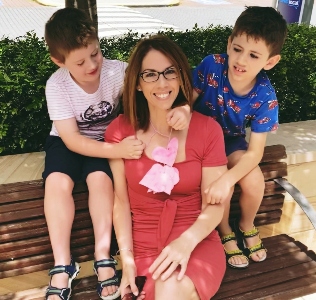
Jen O'Neill
Being young and healthy, with no history of heart health issues or risk factors, might lead someone to believe that they themselves may never experience a heart attack, especially so early on in life. This was the case for new mum Jen O’Neill, who at 36 suffered her first of three heart attacks. When she first began experiencing symptoms, Jen initially brushed them off, blaming it on the exhaustion and sleep deprivation of juggling having a 3-year-old, and breast feeding an 11-month-old baby. “After a particularly difficult day I was in tears talking my husband through my day when I got a pain at the side of my left breast. The pain travelled down my arm to my fingers, and I suddenly felt incredibly nauseous”. Jen was extremely lucky that her husband identified she was experiencing the early warning signs of a heart attack and acted quickly getting her to a hospital, ultimately saving her life.
“Please, please, listen to your body and be aware of the signs and symptoms of heart attack. Don’t ever be afraid to advocate for yourself if you think you are having a heart attack.”
With no family history of health issues related to heart attacks, Jen didn’t think much of these symptoms. Thankfully, her husband would quickly piece together the signs and suggest she may be having a heart attack, and to call an ambulance. Like many others in this position, Jen hesitated when doing so, stating, “it was the shame and embarrassment of taking up a bed in hospital. You don’t want to waste resources, you don’t want to add to the already overflowing hospital system”. The danger within this thought process is what costs so many people valuable time to help save their lives when suffering a heart attack and is something that Jen now aims to share the importance of.
After arriving at hospital, cardiologists told Jen she had suffered a spontaneous cardiac artery dissection (SCAD) and was extremely lucky her husband had picked up the signs and symptoms of a heart attack so quickly, ultimately saving her life. Jen was not only shocked that she had experienced a heart attack based on her lack of risk factors, but how little she’d heard these experiences discussed, particularly within women where the signs of a heart attack could drastically differ from men. It’s for this reason that getting involved in sharing the message that anyone can experience a heart attack is so important to Jen. Pushing forward the idea that just because someone may be young, fit, and healthy, the signs and symptoms of a heart attack should always be taken seriously.
It’s extremely important we normalise the discussion on not only what may happen before and during a heart attack, but also the experience after. Jen felt this was an area often neglected, and it wasn’t until she got in contact with another woman who shared a similar experience that she’d learn some of the basic things people don’t talk about happening to you after having a heart attack. One of the main things that surprised her was the impact taking blood thinners would have on her body, especially being a woman.
“I was comfortable in thinking the majority of people who have SCAD’s usually only have one.”
Unfortunately, in July 2020 during the midst of the COVID lockdown, at the age of 40 Jen experienced her second heart attack 4 years after her first. While at work she suddenly felt extremely tired, and a strong pain in her back. With this being a peak time within the pandemic, Jen feared she would be a burden on the system and take up unnecessary hospital space during these times. She’d relate to the way many other women act when experiencing a heart attack, brushing off symptoms and not wanting to be a bother as she felt she had a responsibility to not waste resources if it wasn’t necessary. “It’s just inbuilt in us all, this is just what happens, and you’ve got to break against the mould sometimes.”
“I felt shocked the second time thinking now that I’ve had two it’s more likely that I will have others”.
This second experience ignited Jen’s passion for ensuring all women know the signs and symptoms of a heart attack and what not to ignore, as these symptoms may differ from those men will experience. Jen stated, “the second one gave me more of a fire in my belly, and made me think, you know what I need to get this message out here.” Currently, it’s not completely known why someone may experience a SCAD, which is why research is so important. However, it is known that predominately younger women are affected, and it could be linked to hormone or stress related issues. It’s believed that in Jen’s case, the accumulation of stress had taken a toll on her and was likely a driving factor in her heart attack. Her experiences have led her to realise that heart health is an extremely important message to be shared and amplified, aiming to do so through telling her story to bring awareness of the subject to all individuals.
Jen O’Neill was an ambassador for Heart Research Australia’s 2022 REDFEB campaign helping raise awareness for how the signs and symptoms of a heart attack can present for women vs men and encouraging women to listen to their bodies.
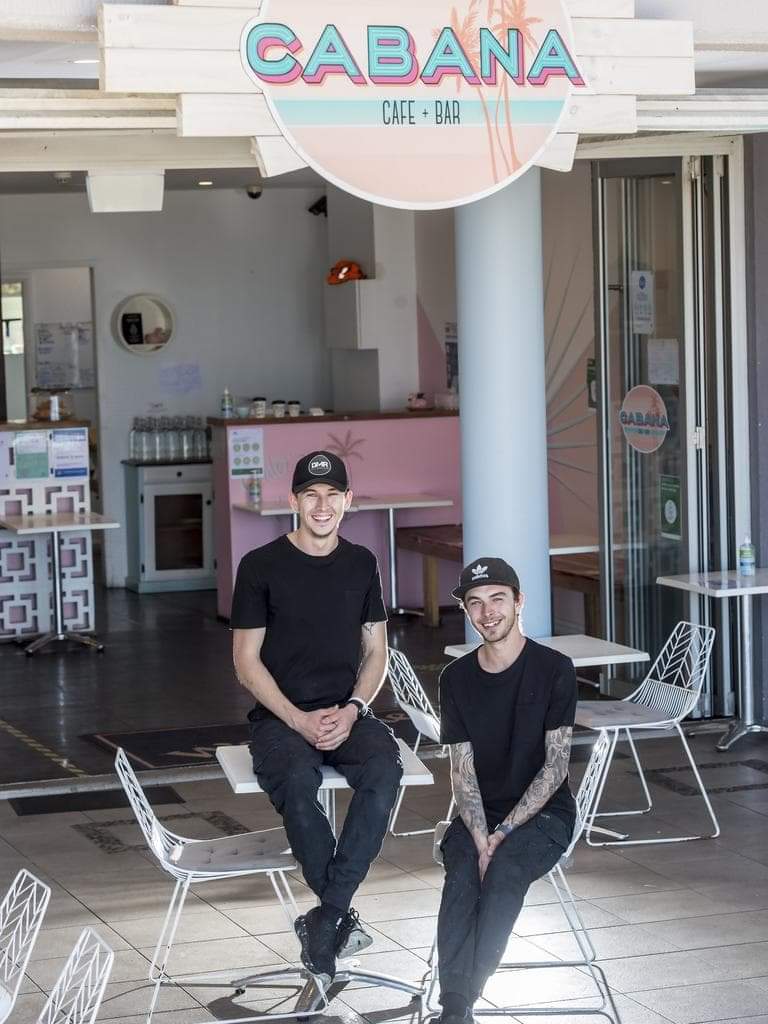
Daniel and Josh Duffy
“We are so grateful we listened to the warning signs our bodies gave us. Our dad wasn’t so lucky. We feel the warning signs were a message from him telling us to get checked.”
What events marked your 20s? Often, it’s a time to explore new places, make new friends or jump into your first career.
Brothers Joshua and Daniel had a very different, defining decade. When both boys reached their early 20s, they discovered they had the same heart condition. A condition they watched kill their 38-year-old father when they were only 10 and 11 years old.
The brothers, then in primary school, woke one morning with their infant sister to find their father had passed away in his sleep. At age 38, his heart silently stopped beating devastating his family and the wider community.
13 years later, Daniel blacked out on his morning commute to work and brother Joshua was having issues during his sleep. Both underwent MRI scans, blood pressure and other heart tests, but there were no signs of major risk.
Like many 20-year-olds, they continued to focus on friendships, sport and work goals. Unfortunately, their health began to deteriorate. Inclusive tests left doctors with more questions than answers.
On sharing their family medical history discussing what happened with their dad, cardiologists inserted an implantable loop recorder just under the skin in their chests to show their heartbeat. Daniel’s heart showed irregular beats throughout the day, which were causing the fainting episodes, and it was found Joshua’s heartbeat paused up to 28 seconds during sleep. Based on these findings, both had pacemakers implanted to prevent future fatalities.
“We are so grateful we listened to the warning signs our bodies gave us. Our dad wasn’t so lucky. We feel the warning signs were a message from him telling us to get checked.”
‘We are honoured to be ambassadors for Heart Research Australia and to help raise awareness that heart disease impacts young people too. In 2 years, my brother and I had 6 heart episodes and are lucky to be able to tell the story from the other side, but it hasn’t been easy.”
Joshua’s body rejected his first pacemaker and is now managing ok with his second pacemaker after another tough surgery. Every journey is different and some more difficult than others. Daniel was back at work within 4 weeks, but Joshua experienced almost 2 years of recovery.
The boys state “we would love to be a lifeline for any young individuals going through heart surgery. It’s tough and we would have loved to have had someone we could reach out to when we were going through pacemaker surgery. No one really talks about it, and we didn’t know anyone we could reach out to. We have joined the Heart Research Australia Heart Health Club private Facebook group in the hopes that we can help share our experience with someone who may be needing it.”
There are still so many missing answers about heart disease. “We still don’t know why my dad’s heart stopped silently and suddenly in the middle of the night and we still don’t know what is causing the irregularity of our heart beats. We are grateful technology has allowed us to life a healthy life by the use of a pacemaker but what we don’t know is why we need it. “
Investing in research is so critical to further understand prevention, diagnosis and treatment of heart disease and to prevent families being torn apart by this insidious disease.
“We are lucky we had our dad’s history to guide us but a better understanding of heart disease and how to prevent heart events may have enabled us to still have our dad with us today.”
The boys are quick to credit the incredible role their mum played in raising them singlehandedly, but note the hole left in their lives without their father around.
“We’re so lucky to have such an amazing and strong woman in my mum who lead our family. She brought us up as a single parent, sent us to private school and always encouraged us to play sport and eat well. She was everything a kid could ask for. However, it would have been nice for her to not have had to do that alone. We would love to have our dad with us now to be able to see how well we are doing and to be able to see him pop down to our café. He would be so proud.”
Together, Daniel and Josh are now business owners at Cabana Café & Bar on the Central Coast of NSW. Their passion for healthy living is expressed positively at work, from the warmth towards their customers to the amazing food. Their business truly nurtures the local community.
To read more personal stories about people impacted by heart disease click here.
Read about some of the research we are currently funding, here.
Want to help us continue our fight against heart disease and help keep families together for longer? click here.
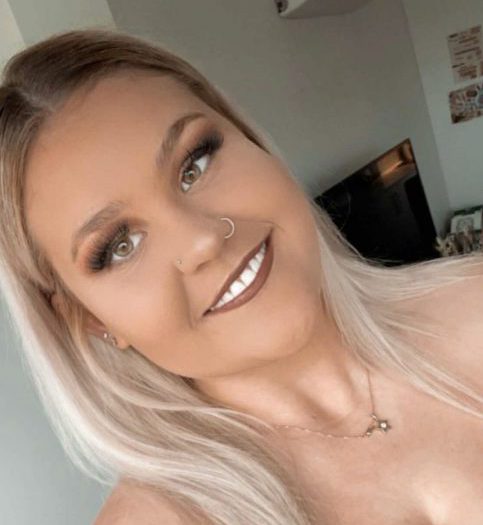
Demi Parkinson
“Being diagnosed with a heart condition is scary but please know that you are never alone. There is so much support available and you should never go through this alone.”
Demi Parkinson was 20 years old, a support worker and nursing student, with a bright future ahead of her, helping numerous Australians when she experienced her first heart episode.
Growing up in Newcastle NSW, Demi’s family had no history of heart conditions except for her grandparents having a heart attack in their 80s.
In June 2020, Demi was at home alone with her parents away when she felt “like my heart was beating out of my chest. I couldn’t breathe and had really bad chest pains.” Unsure of what was happening or what to do, Demi called one of her friends to take her to the hospital. On arrival she was rushed to the resuscitation bay until she was stable.
After numerous tests and a long stay at the John Hunter Hospital in Newcastle, Demi was diagnosed with Semi-Ventricular Tachycardia.
Tachycardia is a type of arrhythmia that creates a faster than a normal resting heartbeat, above 100 beats per minute. There are three types: supraventricular, ventricular and sinus. Ventricular tachycardia, which Demi was diagnosed with, occurs in the lower chambers of the heart, and can reduce effective blood flow throughout the body.
” Being diagnosed with SVT impacted my life in more than one way. It was questioned if I would still be able to be a nurse which has been my dream since I was 12, It had a massive emotional toll on not only me but my family and friends. SVT is always something I will have to be careful with and has affected my everyday life.”
Demi is still studying nursing and is due to finish her course in 6 months. She now monitors her heart rate and needs to be cautious with exercise and stress but continues to live her life helping others and sharing her positivity.
“I am a strong believer that there is always a positive in every situation. Receiving my diagnosis has made me appreciate life so much more and I am thankful for every single day.”
Demi is focussed on sharing her experience with heart disease to help debunk the myth that heart disease only happens to older people and hopes that her story helps others feel they aren’t alone.
“Being diagnosed with a heart condition is scary but know that you are never alone, there is so much support available and you should never go through this alone.”
Heart Research Australia’s Heart Health Club private Facebook group is a great way to connect with others who have experienced heart disease to share stories, experiences, tips and support. You can join the group here.
“I am so grateful for the support of Heart Research Australia donors to have enabled research to be done and to continue to be done to improve the future of heart disease for people like me who are living with this disease.”
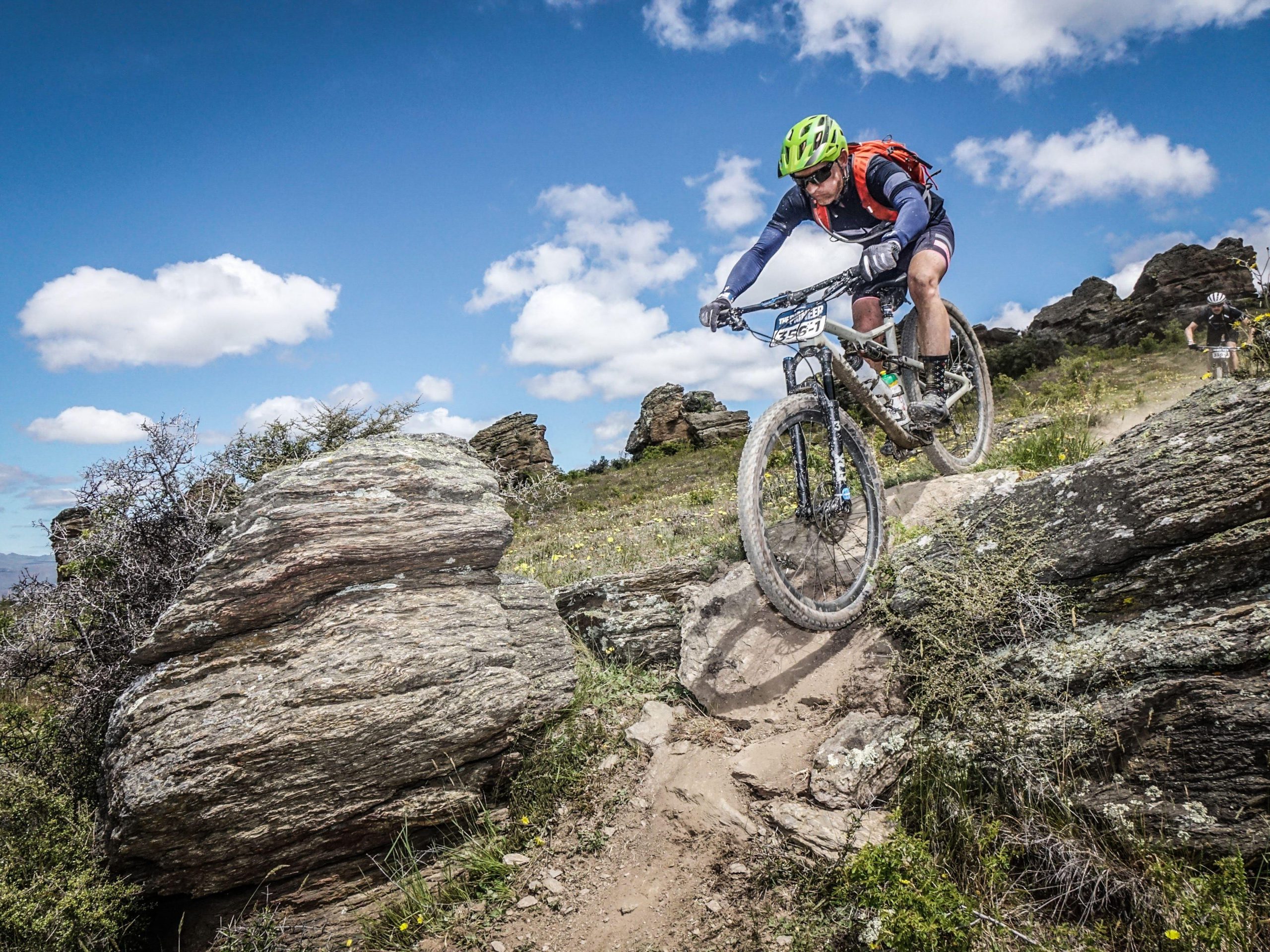
Matt Shields
From a heart attack to cycling 433km across New Zealand, heart research, technology and sheer determination helped Matt scale new heights.
Matt Shield’s story is one filled with sheer determination, hard work and inspiration.
From experiencing a “massive” heart attack and being told he will never be able to exercise again, Matt ended up competing in the Pioneer Mountain Bike Race in New Zealand. A race that travels 433km, climbing 12,540M. The 6-Day Pioneer Mountain Bike Race that travels through New Zealand’s Southern Alps, is a true pioneering feat and not for the faint hearted. Definitely not for someone who has experienced a major heart attack… Right?
For someone who loves to live life to the extreme, having a heart attack was a devastating blow for Matt Shields. Training for the World Rogaining Championships, Matt was running his usual 15km run to work one morning when a sudden “shot-gun” pain in the chest halted his dreams in one fell swoop collapsing at the side of the Pacific Hwy mid-run.
In an ambulance, zooming down the Pacific Hwy to Royal North Shore Hospital, the paramedics used technology pioneered by Heart Research Australia to take Matt’s ECG in the ambulance and transmit the result immediately to the hospital. Surprisingly his ECG results were fine yet a few minutes later things changed quickly. Matt says, “my chest just exploded – 100% blockage, the pain was off the Richter scale.” Thankfully with the technology speaking directly to the hospital a team of doctors were waiting for him when the ambulance arrived. “The team was ready and geared up and I was sent straight to the operating theatre.”
In the operating theatre, Matt watched his heart on the screen being injected with a contrasting agent through the radial artery. “It was supposed to be like a big beautiful piece of coral, but it was all black. The defibrillator was attached, adrenaline in my arm, people frantically moving around the room then I saw them insert the guide wire and stent into the LAD [left anterior descending artery]. As soon as the balloon was in and expanded the pain went immediately away, it was the most incredible thing and made me realise then it was probably going to be ok.”
The stent used to open the blockage in Matt’s LAD and allow blood to reach the heart is a treatment pioneered by Heart Research Australia at Royal North Shore Hospital. It is used for heart attacks as an alternative to slow-acting, clot-busting drugs, which used to take time to work, and could cause serious complications. The stent procedure can give immediate relief to patients and is a proven much safer and more effective treatment and is now everyday practice.
The stent procedure in conjunction with the ECG in the ambulance transmitting results directly to the hospital are treatments that were available to Matt due to research breakthroughs funded by Heart Research Australia thanks to the generosity of our donors. These treatments used together have helped reduce death rates from heart attacks at Royal North Shore Hospital by 30% and are now standard practice. Without the generous support of our donors, the ideas behind these lifesaving treatments, may have stayed in someone’s notebook.
The pain, the procedures, and the shock was according to Matt, the easy bit. The hard bit was “the talk” the next day. When the doctors sat down with Matt to discuss what happened he was told he will need to be on medication for the rest of his life and that his life was going to be very different. When Matt asked about flying out a few days later for the Rogaining Championships which involved 24hours of running, the doctors said no, no more running. Ever. For someone performing at elite athlete level and so focused on training and living an active lifestyle this was a serious shock leaving Matt’s head spinning. At this stage Matt had not learnt the skills and techniques around meditation and didn’t know much about psychology.
“without exercise and the framework I normally use to clear my mind and not think about all the thoughts it was a very hard place to be.”
Working with his Cardiologist, they found out Matt’s heart attack had been caused by a ‘plumbing’ not ‘electrical’ issue. The cause of his heart attack was very specifically around lipoprotein-little-a and calcification on the left anterior descending (LAD) artery. Lipoprotein-little-a is a type of lipoprotein/cholesterol and high levels increase your risk for atherosclerosis (build up of fatty deposits in the wall of the artery). With this knowledge, a background in research and data, and the help and support of his Cardiologist, Matt developed his own framework to measure and track everything to get back into exercise. He experimented and tested, finding what worked for his body and what didn’t, allowing him to safely push further and further.
Matt knew where he wanted to be. “The problem was where I was in my head wasn’t where I needed to be”. With help from a psychologist in terms of building the tools he needed, using apps such as headspace and working with his framework and cardiologist to get back into exercise, Matt ended up being able to reach a fitness and mindset level to safely compete in the 6-day Pioneer Mountain Bike Race in New Zealand. An incredible achievement for any individual let alone one who’s heart attack had been so severe he was told he would never be able to exercise again.
Matt is now continuing his love of bike riding and high-performance sports and is working to connect people affected by heart disease either themselves or their family or friends and helping them start a dialogue, connect, get healthy physically and mentally and maximise their sporting ability.
Matt has also come on board as an ambassador for Heart Research Australia’s RED FEB and is sharing his journey with heart disease to help raise awareness and funds for life-saving research into the prevention, diagnosis and treatment of heart disease.
We are so grateful to Matt and all the patients who share their heart stories with us. Everyone’s journey with heart disease is different and being able to share these experiences are so helpful in processing and managing people’s experience with heart disease.
If you’d like to read more about Matt’s journey visit his website https://epichearts.com.au/.
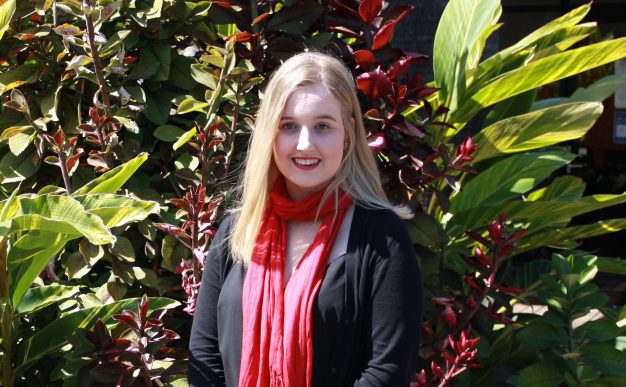
Emily Tutt
In 2008, Emily Tutt was at school enjoying a normal Year 11 day, when her heart suddenly started beating extremely and abnormally fast. She was sent to the sick bay and waited for her mum to fetch her. Her mum took her to the hospital, but her heart went back to a ‘normal’ rhythm before they arrived, making a diagnosis difficult for the doctors.
Shortly afterwards, her heart started its erratic beating again on two separate occasions. Luckily each time she reached the hospital in time to have an ECG machine test her heart beat, which subsequently indicated that she had Supraventricular Tachycardia (SVT) – a heart rhythm disorder.
Later that year, Emily underwent surgery to correct her heart beat. Unfortunately it was during this time that her youngest brother Charles was also diagnosed with SVT.
In 2010, when Emily was at work, she had another episode of SVT which meant she had to another radiofrequency catheter ablation in February 2011.
In June 2014 Emily’s health took another ‘knock’. She was diagnosed with cardiac abnormalities: Atrial Fibrillation (AF) and Sinus Tachycardia. AF is a form of arrhythmia and affects over 200,000 Aussies – it is caused by disorganised electrical impulses in both atria, and was not related to Emily’s previous heart condition. The most common reasons for AF in the community are ageing and high blood pressure, neither of which relate to Emily. AF can occur in young people with clear triggering factors such as excess alcohol intake – again a factor not relating to Emily.
Unfortunately there is no specific treatment or cure for AF, but Emily is taking beta blockers to help regulate the electrical activity of her heart and minimise the effect of the AF which so far has been effective.
Should the drug therapy stop managing her condition, Emily does have another option, such as a fairly new procedure that has only been around for six years. This however wouldn’t cure but simply treat the symptoms.
“Everyone gets thrown a few curveballs in their life. I’ve certainly had my fair share. But this journey has taught me that heart research is extremely important in identifying new ways to prevent, treat and diagnose heart disease” said Emily.
“If it wasn’t for research, as funded by Heart Research Australia, there would be a strong possibility I wouldn’t be here today and nor would many of my family members, who are also affected by heart disease.”
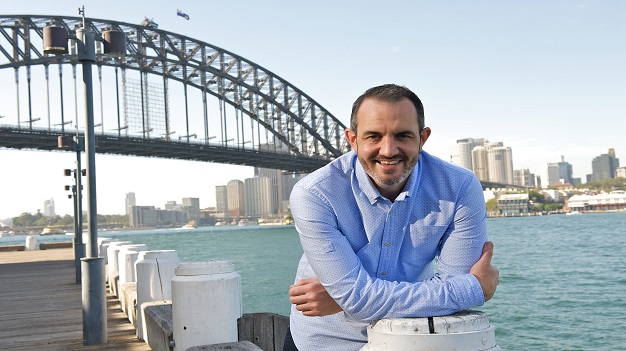
James Partington
In May of 2012 I picked up a mild chest infection, following a visit to the Dr’s which involved a number of tests I was called back immediately. The Dr had found a slight heart murmur (which was not the root problem). I was referred to cardiologist immediately for an ultrasound and general check. Following a number of minor procedures (aortic angio being one of them) I was diagnosed with a Bicuspid aortic valve, moderate regurgitation and an aortic aneurism of over 50mm.
I was naturally shocked but still in denial – as I knew nothing about this disorder. It was genetic and at that point I was asked about family history and any sudden deaths in the family. Aortic aneurisms are a silent killer. I was 37 and although I wasn’t told it my life expectancy wasn’t looking good (much past 40) if it went untreated.
I acted straight away and reached out to Dr Michael Wilson from RPA –I know Michael personally through our wives and our children used to have swimming lessons together. We talked about the course of treatment and the operation I would need to have. I new Aortic valve and replacement of the ascending aorta – an operation that would take 8 hours, involve stopping my heart, going on bypass and then restarting me. We decided on the sort of heart valve based on my physical activity – at the time I was running half marathons, swimming most days in the ocean with the Bold and Beautiful swim group – a 1.5km swim in open water. I have always been fit and healthy – never smoked, ate healthy foods. You can imagine my frustration I only ever thought heart conditions happen to unfit, overweight, beer swilling, cigarette smoking reckless people. It was important that after my recovery I could go back to doing what I’ve always done (in moderation obviously!)
After further test in the July and August Michael advised me to have the operation in September, I booked myself into Macquarie university hospital – I had good private health cover and wanted the best treatment and a leading institution in this area. I also opted into a research program with Dr. Ratnasari Padang Cardiology Fellow and PhD Scholars at the Bicuspid Aortic Valve Study Coordinator – Agnes Ginges Centre for Molecular Cardiology.
I have always believed the advancements of medicine and need for research forms the fundamentals in things like product development – be it drugs or devices and anything I can do to help (albeit small – is a good thing).
So I had the op on September the 6th 2012 – people warn you about how traumatic it is and use words like “you’ll feel like you’ve been hit my a truck.” I felt like it had hit me and come back for a couple more goes. My wife was distraught and holding the family together – her strength was incredible. We have 3 boys 8,7 and 2 – being so young they didn’t fully understand the gravity of what was happening.
I had a few hick-ups in hospital – some atrial fibrillation but all fixable and after 10 days came out and started rehab – well my own version of it. My goal was to get back in the water asap – November was my goal ( I did it by the end of October ) first swimming one length of Fairlight ocean pool and slowly building up. My daily routine was eat, walk, sleep – repeat with the occasional swim.
After 8 weeks I was back at work (I run my own business with 6 staff). By Christmas I was back in the Bold and Beautiful swim.
Once a year I go back for a check up with my cardiologist – Prof. Richmond Jeremy at SCC. I am better than back to normal – fitter healthier and couldn’t be more grateful to the people and services I received. I contacted Medtronic and put myself forward as an advocate ( I have a Freestyle porcine valve).
Heart disease affects all walks of life, the more we know about it the better equipped we will be to understand and develop better ways to care for people. With a growing population and higher obesity rates – its common sense that we have to not just raise awareness but raise funds and channel those funds into the right areas so that we can all benefit.
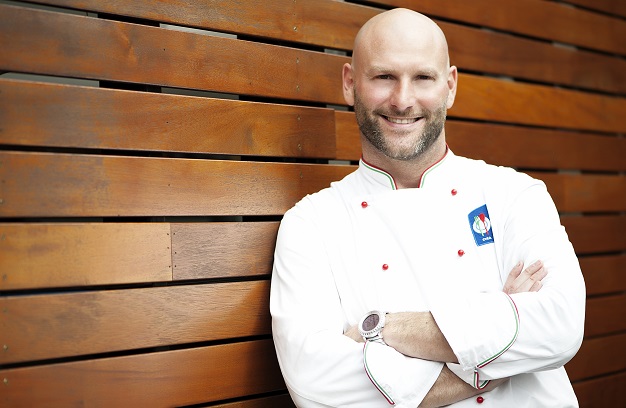
Alessandro Pavoni
“After my first heart attack, I kept hearing the doctors using jargon that later I learned were the names of cardiac procedures and methodologies that Heart Research Australia had funded. That was when I first understood that I owed them my life,” said Alessandro.
Brescian-born chef Alessandro Pavoni blasted into Sydney’s dining scene in 2009 with his first restaurant venture, northern Italian gem Ormeggio at the Spit.
At the age of 36 Alessandro had his first heart attack, followed by a second within 8 months. Now he is determined to spread the word that heart research matters.
“Being able to support Heart Research Australia by being an Ambassador and sharing my story and support is really important to me. The more people that know about their great work the better for all of us!”
At the age of 36 Alessandro had his first heart attack, followed by another one in 2010. He was treated at Royal North Shore Hospital. Alessandro is Executive Chef and owner of Ormeggio at The Spit, Chiosco and Spiedo Restaurant & Bar.
Alessandro and his wife Anna are determined to spread the message that heart research saves lives by supporting Heart Research Australia.
Alessandro lives on the northern beaches with his Australian wife, Anna and two children Jada and Luca. In his spare time he can be found long boarding on one of the many local beaches, cruising on his Harley or cooking up a storm in his backyard for friends and family.

Share your heart journey
Survivors of heart disease are not alone. In fact, many of them choose to share their stories to reach out to the community and help others. They share their stories to champion hope and support to help us fight the devastation of heart disease. Contact us at 02 9436 0056 or via email enquiries@heartresearch.com.au if you wish to share your heart journey with our community.
